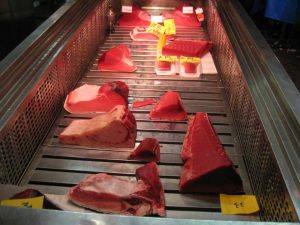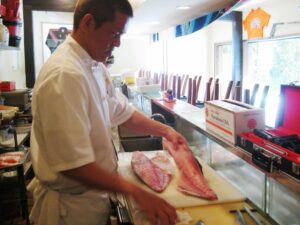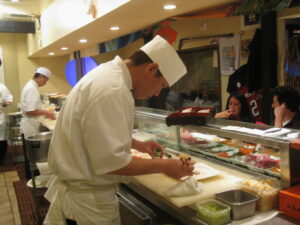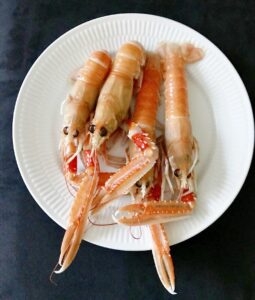
Japanese sea urchin also called uni in Japanese is a sea animal. It is round and has a lot of spikes, like a hedgehog.
Japanese sea urchins can be found on the menu of Japanese sushi restaurants in Japan and exclusive sushi restaurants in the US. It is a very fine and delicate taste.
In Europe, more and more people gets to know sea urchins, there are several European chefs who have traveled to Japan in recent years. The food experiences they have had in Japan have been taken to Europe. More and more restaurants in Denmark have got sea urchins on the menu.
In Denmark, sea urchins most often come from the Faroe Islands.
In Japan, many different kinds of sea urchins are found in the sea around Japan.
Sea urchins do not taste the same. The Japanese sea urchins are divided into what area of Japan they come from and their quality. It is bit like prawns.
In Europe you can buy cheap prawns, where the quality is not so good. Then you have the Greenlandic, which have a much finer quality. Similarly, there will be a difference in sea urchins.
Read more about Sushi chef & sake sommelier
_
Zoë has lectured and held sushi courses for A. P. Moller – Maersk, Hugo Boss Nordic, Novo Nordisk, Novartis, Velux, Gorrissen Federspiel, Beierholm revision, Elbek & Vejrup and many more.








